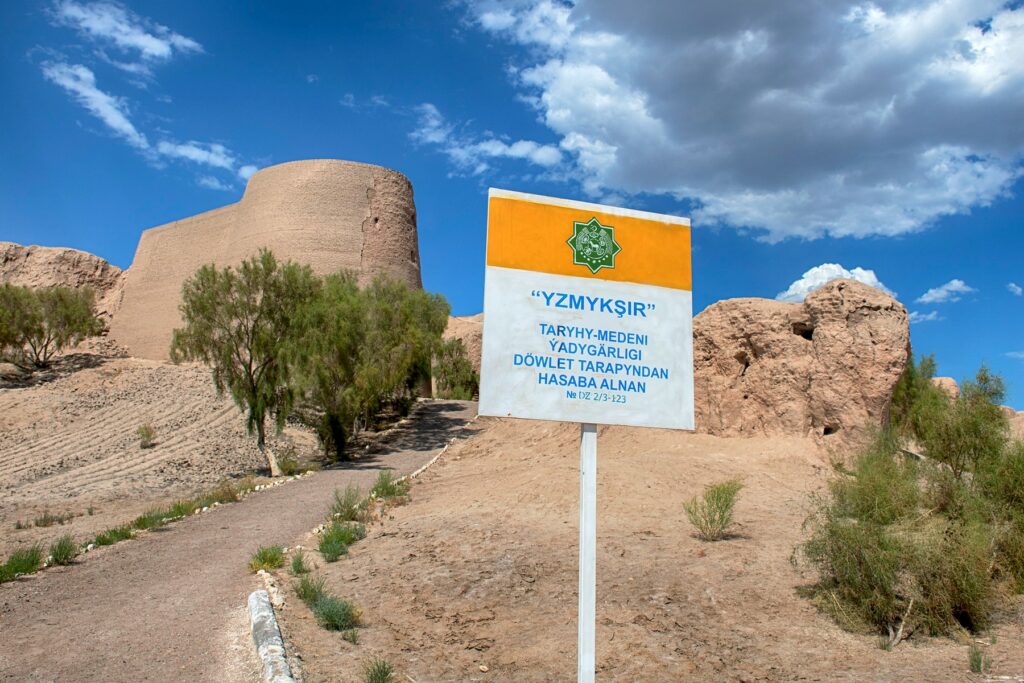Izmukshir Fortress
Yzmukshir Silk Road Town fortress
Izmukshir Fortress, also known as Zamakshar, is a historical site located 25 km southwest of Dashoguz city in the Kara Kum desert, now part of the Kunya-Urgench Historical and Cultural Reserve Museum. Kunya-Urgench, once the capital of the Khorezm State, is home to the ruins of the Izmukshir Fortress.
Although much of the structure has been lost to time, the remaining walls and towers still offer a glimpse of its former grandeur. The surviving walls stretch for about 1500 meters, and a deep crescent-shaped ditch, known as Gala Kendegi, marks the fortress’s entrance.
Historical Significance of Izmukshir Fortress
The earliest buildings in the Izmukshir area date back to between the 3rd century BC and the 3rd century AD. The fortress reached its peak during the 9th to 12th centuries, a period known as the Oriental Renaissance. Under the rule of the Gaznevids, Seljukids, and Karakhanids, Zamakshar flourished and reached its zenith during the reign of the Khorezmshah dynasty. However, the Mongol invasion in the 13th century led to the capture and near-total destruction of Izmukshir, like many other cities in Khorezm.


Abu al-Kasim Mahmud az-Zamakhshari - A Renowned Figure from Zamakshar
Besides the historic essence, Izmukshir Fortress is widely known for being the birthplace of the outstanding scholar, great philosopher, and poet Abu al-Kasim Mahmud ibn Umar az-Zamakhshari, born on March 8, 1075, in Zamakshar. Further, he attained fame for his theological and philosophic works, and as a poet. Az-Zamakhshari was highly regarded throughout the Eastern world and lived abroad for much of his life. He spent time in Mecca, among other places, and acquired the sobriquet “Jaralla,” which means “Servitor to God.” He returned to his native country in his later years and died in 1144.
The Ruins and Architecture of Izmukshir Fortress
Despite the harsh desert environment, parts of Izmukshir Fortress have survived, offering insight into the city’s former magnificence. The most notable feature of the existing buildings are the arched niches in the walls, which were used for storing dishware and household items. These niches give us a glimpse into the daily lives of people who lived in the city over 2,000 years ago.
Izmukshir Fortress stands as one of the most monumental fortresses in Khorezm, reflecting the region’s rich history and its role as a key part of the great states of Central Asia. Long before the Silk Road era, the fortress and surrounding Khorezm oasis were centers of power, with numerous walled cities that played a pivotal role in the region’s history.
Other sights near Zamakshar
Page updated 9.12.2024